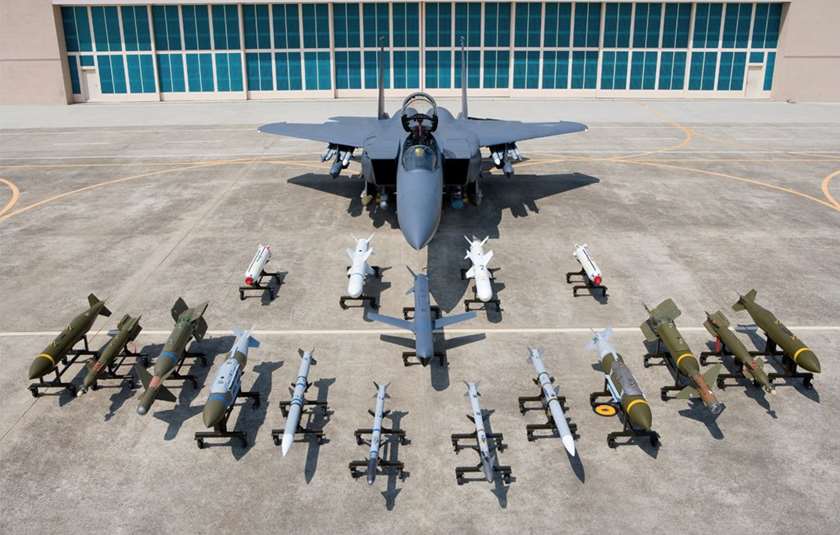As military tensions intensify in the Indo-Pacific, two of the world’s most advanced air superiority fighters—the South Korean F-15K Slam Eagle and the Indian Su-30MKI—are set for major upgrades to ensure their dominance in the sky continues.
These modernizations come at a time when technological advancement is critical to maintaining a strategic edge, with both nations looking to upgrade their air forces amid evolving security challenges from neighboring countries.
On December 16, South Korea’s state arms procurement agency announced that the South Korean government has approved a budget increase to modernize its fleet of F-15K fighters, originally deployed in 2005, with an additional 1 trillion won (approximately US$696 million) beyond the initial estimate.
The F-15K, also known as the Slam Eagle, is a South Korean-specific variant of the F-15E designed to meet the unique requirements of the Republic of Korea Air Force (ROKAF).
While South Korea has a powerful fleet of advanced aircraft, including the stealthy F-35 fighters, the versatile F-16 C/D, and the domestically-produced FA-50, upgrading the F-15K fleet remains a logical and strategic move.

The F-15K still has considerable service life remaining. Its capability to perform a wide range of combat and operational tasks, combined with the upcoming upgrades, guarantees that the F-15K will continue to play a role in South Korea’s air defense strategy in the coming years.
As a result, the Defense Project Promotion Committee approved a 4.56 trillion-won project to increase the operational capabilities and survivability of the F-15K aircraft by upgrading vital avionics and systems through 2037.
The project, overseen by the Defense Acquisition Program Administration (DAPA), will see major improvements, including replacing the current radar system with the cutting-edge Active Electronically Scanned Array (AESA) radar, expanding mission computer memory, and implementing a fully automated electronic warfare system.
The approved budget surpasses the 3.46 trillion won (US$2.73 billion) allocated by the committee in December 2022. DAPA explained that the increase was due to a global uptick in material costs and maintenance expenses, exacerbated by ongoing supply chain disruptions.
In addition to the F-15K upgrade, other projects approved in the meeting include an initiative to develop domestically produced short-range air-to-air missiles for the KF-21 fighter and a program to upgrade six 1,800-ton submarines.
The timing of the F-15K upgrade is particularly significant, as South Korea faces growing threats from North Korea.
Last month, the US Department of State approved the sale of crucial equipment for the fleet’s upgrade, including 96 advanced mission system computers, 70 AESA radars, and electronic warfare systems designed to enhance the aircraft’s defense capabilities.
As EurAsian Times reported at the time, these improvements are especially critical in light of ongoing threats from North Korea, including missile, drone, and even balloon attacks.
The upgraded radar and electronic warfare systems will be important to augment the F-15K’s ability to detect and counter such threats.
IAF’s Su-30 MKI To Get Major Upgrade
South Korea isn’t the only nation focused on enhancing the lives of its air superiority fighters. India is also investing heavily in upgrading its Russian-origin Sukhoi-30 MKI aircraft fleet, with plans to equip them with advanced technologies to ensure they remain combat-ready for the next three decades.
These upgrades include AESA radars, extended-range weapons, and an upgraded electronic warfare suite (EWS).
On December 3, India’s Ministry of Defence (MoD) announced that the Defence Acquisition Council (DAC), led by Defence Minister Rajnath Singh, had approved five major acquisition proposals worth over Rs 21,772 crore (US$2.57 billion).
Among these is the procurement of a new EWS for the Su-30 MKI fleet. The new system will feature advanced self-protection jammer pods, next-generation radar warning receivers, and other key components.
The aircraft already uses an Israeli-made jammer pod. However, the upgraded EWS will intensify the Su-30 MKI’s ability to evade enemy radar and weapon systems to guarantee better protection while conducting missions in contested airspaces defended by advanced air defense systems.

In July, it was reported that the MoD had finalized a draft proposal for the Cabinet Committee on Security (CCS), led by the Prime Minister, to approve the upgrade of 84 Su-30 MKI jets at an estimated cost of Rs 63,000 crore (US$7.5 billion).
These upgraded jets, dubbed “Super Sukhois,” are apparently expected to rival fifth-generation fighters in terms of performance, though they will lack stealth capabilities.
The new systems will also enable manned-unmanned teaming, with the Su-30 MKIs working alongside advanced drones powered by artificial intelligence (AI) and data links. The Indian Air Force (IAF) plans to keep the Su-30 MKI in service until at least 2055.
The upgrades will also include the installation of indigenous ‘Virupaksha’ AESA radars, which are expected to enhance the detection capabilities of the Su-30 MKI significantly. These radars will extend the range of enemy platform detection by 1.5 to 1.7 times compared to the current Russian radars, greatly improving the aircraft’s operational effectiveness.
Overall, these upcoming upgrades signal a clear intent from both South Korea and India to maintain air superiority in an increasingly volatile geopolitical landscape.
For South Korea, the upgraded F-15Ks will continue to serve as a key deterrent against North Korea and China, while India’s upgraded Su-30MKIs will augment its ability to counter challenges posed by China and Pakistan.
- Contact the author at ashishmichel(at)gmail.com
- Follow EurAsian Times on Google News




